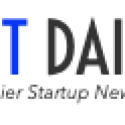Politics
6 Strategies for Rapid Scaling and Collaboration Among Non-QA Engineers
Published
1 year agoon
By
Drew Simpson
Rapid growth is something that companies often aspire to and hold up as a measure of their success. While this is generally true, the fact remains that quick expansion and fast scaling are often extremely challenging to navigate, especially for fledgling businesses.
These “growing pains” can cause serious problems that have ripple effects throughout the entire company. So it is critical to understand the pitfalls and learn how to navigate them as efficiently as possible.
QA Ensure Your Strategies for Rapid Scaling and Collaboration Will Go Smoothly
Logically, founders often think that they should look for ways to avoid the hurdles that come with rapid scaling. Unfortunately, this is an impossible task for any fast-growth situation. The best thing to do is learn about the most common scenarios that occur. Then figure out how to manage them effectively.
The good news is that it is possible to implement rapid scaling without hampering your company’s overall productivity. The solution is to tackle any challenges that arise immediately, which helps to avoid harming your existing team’s motivation or alienating new hires.
Understanding the Choke Points: Scale Everything Simultaneously
Growth always means hiring new team members because steady expansion means more people are necessary for success. This can mean anything from hiring a new team of developers to work on furthering your product to customer service reps to ensure the client experience doesn’t suffer during your scale-up.
In my experience, there’s always a bottleneck in these scenarios. Companies have to simultaneously manage the growth of their team and the expansion of products and processes. It’s common to see businesses struggle with this because they believe they can scale one aspect at a time.
Remember, the more people you have, the more your procedures must adapt. What worked for a team of 10 can’t sustain a team of 20, and it certainly won’t work for a group of 200. This means that a key part of successful rapid scaling is not only hiring well but also creating better, more efficient onboarding processes. It helps newbies integrate fully into their existing workplace culture.
One aspect of this integration is ensuring the newcomers can “mesh” with the veterans — particularly when it comes to engineers and non-engineers working together. Keeping everyone on the same page is critical for maintaining a smooth expansion path.
Below are several steps your company can take to begin streamlining the onboarding process and fostering better collaboration between QAs and non-engineers.
-
Start by hiring veteran managers with scaling experience.
The advice given by most in the business realm is to always grow your leaders from within. In a majority of cases, this is an excellent strategy. It helps your business flourish and stay focused on its goals.
However, this route often doesn’t work when you’re undergoing rapid expansion. Due to the “full speed ahead” nature of the duties involved, the best course of action here is to seek out seasoned management with previous outside experience in meteoric growth.
When you bring on management that can take the reins of certain expansion aspects without direct supervision, it frees you to focus on the bigger picture. It also gives the less experienced team members someone easily accessible for guidance.
-
Pair newbies and “oldies” for faster integration.
Following a “new-with-old” buddy system can be extremely beneficial for periods of swift scaling. Creating these pairs is one strategy that worked exceptionally well for us at Qase because of how technical our projects are.
Both sides of this buddy system benefit immensely from these one-to-one pairings. New hires are able to glean employee-specific knowledge. They can also connect with someone who can help them connect with other “old guard” team members. It also gives them a safe haven to ask questions when they need direction rather than constantly approaching unfamiliar colleagues in their department.
On the other hand, veteran employees get to broaden their skill sets and refine their soft skills. They are critical for any person in your company who hopes to become a leader one day.
We also utilize a version of this buddy system when forming project teams. By blending half new hires and half veterans, we create a team that is greater than the sum of its parts. The newbies aren’t yet entrenched in a particular way of thinking, so they are more likely to make bold, innovative suggestions.
Having seasoned employees on the team helps to guide these suggestions in a productive, doable direction. It also speeds up the typical “forming-storming-norming-performing” idea cycle in which untested team members typically get stuck. They can offer company-specific guidance and practical tips as well, further improving the ideas generated. This helps your company maintain its momentum while cultivating innovative ideas and fresh solutions.
-
Spend time fully developing and refining your hiring and onboarding processes.
In the beginning, it’s easy for founders to “wing it” a bit when it comes to onboarding and hiring. The team is often small enough that it seems logical to put off investing time and effort into onboarding processes until some nebulous “later” time.
Speaking from experience, it is much better to go ahead and spend that time creating detailed, information-rich onboarding processes and hiring profiles. Knowing ahead of time exactly which types of candidates will fit in best with your corporate culture and the existing team can save you time, money, and stress.
Onboarding is often the worst growing pain your business will experience during periods of fast scaling. Doing all you can to smooth this process out beforehand will help you hire better and integrate newbies faster. Since speed and momentum are so vital for supporting this kind of scaling, think of it as an investment in your company’s future.
Remember, knowledge is power, especially for newcomers. It can be highly alienating and frustrating for new people who have no feel for your corporate culture to try to jump into their jobs and also fit into a team full of people they don’t know.
Developing clear and comprehensive training guides is important. It ensures that all of your new hires receive consistent, correct information about basic work processes, company goals, and general conduct guidelines. This empowers newbies to feel like they understand their role more thoroughly. It also prevents any intentional or unintentional misinformation from spreading and slowing your team down.
-
Continually look for ways to automate.
Automation is a key component of your scaling efforts, and it can easily be the difference between success and failure. Before you begin a massive growth spurt, review your existing processes and routines with a fine-toothed comb and an open mind.
The closer you can inspect all of the established processes in your organization, the more minor tasks you will likely find that can be automated, streamlined, or removed altogether. During these review sessions, you will also start to see areas that could potentially cause bottlenecks to your expansion efforts. For example, the need to constantly grant access permissions to newcomers who will be working on current and future projects.
It is also worth noting that no-code and low-code solutions are often excellent choices for a low-effort, high-reward tool to prevent scaling lags. Things like chatbots and dedicated Slack channels are tools that Qase uses to save both time and effort.
-
Ensure every department has a clearly defined plan of action at all times.
Periods of hypergrowth are often ripe for confusion and miscommunication. Be aware of this possible pitfall before you begin your next round of expansion.
Nobody can help you reach your destination if they have no idea where they are going. It means that clarity and transparency are especially critical during these times.
Remember that unclear goals are one of the most significant demotivating factors in a workplace. When there is a noticeable lack of direction, both new hires and old-timers will quickly begin to disengage — even if they were previously excited to come to work every day.
In fact, confusing goals are especially dangerous for newcomers because they already lack a deeply rooted connection to colleagues and your company’s mission. If they start feeling like they are adrift in the workplace, they are far more likely to leave their position in favor of a brand with well-defined mission statements and clear goals.
Because this is a pervasive problem for companies experiencing rapid scaling, it’s something management must stay on top of. One of the best ways to handle this is with a top-down approach. Start by ensuring your top executives have a deep connection to your brand’s mission and goals. Let the “trickle-down effect” spread this passion to middle management and their team members.
Tools like SMART goals, OKRs, and North Star metrics are all great starting points for creating the ideal solution for your business.
-
Keep everyone on the same page with a single “tech radar” information hub.
Well-organized information is also a vital component of keeping your internal projects running smoothly. Nothing slows growth and stifles innovation more than chaos and confusion. To prevent this, simply create your own “command center” or central hub for tech projects.
Utilizing a company-wide tech radar (which is just a comprehensive information center) helps everyone stay in the loop about important information. For example, which programs are being worked on, what software is being used, and how existing workflows operate. A repository like this eliminates crossed signals and wasted time by making it easy for anyone to review the guide before jumping into the middle of an active project.
Tech radars also have the added bonus of giving executives a big-picture view of what is and isn’t working well and where there is potential for cross-team collaboration.
Think About the Future Before You Get There
Rapid scaling doesn’t have to be a nightmare, even if it begins happening unexpectedly. While hypergrowth scenarios may seem like a two-edged sword, growing pains are inevitable but don’t have to be unmanageable.
Planning ahead and creating a solid foundation to build upon will help you streamline the process and position your business for great success.
Featured Image Credit: Dylan Gillis; Unsplash; Thank you!
Nikita Fedorov
Nikita Fedorov is an entrepreneur and professional with over 13 years of experience in web development, software testing and automatization. He is a founder of Qase.io, one of the first companies to launch a system that is changing the traditional landscape by providing an intuitive TMS that simplifies life for dev and QA teams.
You may like
-


Heat-storing batteries are scaling up to solve one of climate’s dirtiest problems
-


Generative AI deployment: Strategies for smooth scaling
-


Top Strategies of Lead Generation for Technology Companies
-


Mastering High-Net-Worth Divorce Strategies
-


Rapid Application Development and the Rise of No-Code Heroes
-


5 Strategies for Overcoming Gender Bias in Entrepreneurship
Politics
Fintech Kennek raises $12.5M seed round to digitize lending
Published
8 months agoon
10/11/2023By
Drew Simpson
London-based fintech startup Kennek has raised $12.5 million in seed funding to expand its lending operating system.
According to an Oct. 10 tech.eu report, the round was led by HV Capital and included participation from Dutch Founders Fund, AlbionVC, FFVC, Plug & Play Ventures, and Syndicate One. Kennek offers software-as-a-service tools to help non-bank lenders streamline their operations using open banking, open finance, and payments.
The platform aims to automate time-consuming manual tasks and consolidate fragmented data to simplify lending. Xavier De Pauw, founder of Kennek said:
“Until kennek, lenders had to devote countless hours to menial operational tasks and deal with jumbled and hard-coded data – which makes every other part of lending a headache. As former lenders ourselves, we lived and breathed these frustrations, and built kennek to make them a thing of the past.”
The company said the latest funding round was oversubscribed and closed quickly despite the challenging fundraising environment. The new capital will be used to expand Kennek’s engineering team and strengthen its market position in the UK while exploring expansion into other European markets. Barbod Namini, Partner at lead investor HV Capital, commented on the investment:
“Kennek has developed an ambitious and genuinely unique proposition which we think can be the foundation of the entire alternative lending space. […] It is a complicated market and a solution that brings together all information and stakeholders onto a single platform is highly compelling for both lenders & the ecosystem as a whole.”
The fintech lending space has grown rapidly in recent years, but many lenders still rely on legacy systems and manual processes that limit efficiency and scalability. Kennek aims to leverage open banking and data integration to provide lenders with a more streamlined, automated lending experience.
The seed funding will allow the London-based startup to continue developing its platform and expanding its team to meet demand from non-bank lenders looking to digitize operations. Kennek’s focus on the UK and Europe also comes amid rising adoption of open banking and open finance in the regions.
Featured Image Credit: Photo from Kennek.io; Thank you!
Radek Zielinski
Radek Zielinski is an experienced technology and financial journalist with a passion for cybersecurity and futurology.
Politics
Fortune 500’s race for generative AI breakthroughs
Published
8 months agoon
10/11/2023By
Drew Simpson
As excitement around generative AI grows, Fortune 500 companies, including Goldman Sachs, are carefully examining the possible applications of this technology. A recent survey of U.S. executives indicated that 60% believe generative AI will substantially impact their businesses in the long term. However, they anticipate a one to two-year timeframe before implementing their initial solutions. This optimism stems from the potential of generative AI to revolutionize various aspects of businesses, from enhancing customer experiences to optimizing internal processes. In the short term, companies will likely focus on pilot projects and experimentation, gradually integrating generative AI into their operations as they witness its positive influence on efficiency and profitability.
Goldman Sachs’ Cautious Approach to Implementing Generative AI
In a recent interview, Goldman Sachs CIO Marco Argenti revealed that the firm has not yet implemented any generative AI use cases. Instead, the company focuses on experimentation and setting high standards before adopting the technology. Argenti recognized the desire for outcomes in areas like developer and operational efficiency but emphasized ensuring precision before putting experimental AI use cases into production.
According to Argenti, striking the right balance between driving innovation and maintaining accuracy is crucial for successfully integrating generative AI within the firm. Goldman Sachs intends to continue exploring this emerging technology’s potential benefits and applications while diligently assessing risks to ensure it meets the company’s stringent quality standards.
One possible application for Goldman Sachs is in software development, where the company has observed a 20-40% productivity increase during its trials. The goal is for 1,000 developers to utilize generative AI tools by year’s end. However, Argenti emphasized that a well-defined expectation of return on investment is necessary before fully integrating generative AI into production.
To achieve this, the company plans to implement a systematic and strategic approach to adopting generative AI, ensuring that it complements and enhances the skills of its developers. Additionally, Goldman Sachs intends to evaluate the long-term impact of generative AI on their software development processes and the overall quality of the applications being developed.
Goldman Sachs’ approach to AI implementation goes beyond merely executing models. The firm has created a platform encompassing technical, legal, and compliance assessments to filter out improper content and keep track of all interactions. This comprehensive system ensures seamless integration of artificial intelligence in operations while adhering to regulatory standards and maintaining client confidentiality. Moreover, the platform continuously improves and adapts its algorithms, allowing Goldman Sachs to stay at the forefront of technology and offer its clients the most efficient and secure services.
Featured Image Credit: Photo by Google DeepMind; Pexels; Thank you!
Deanna Ritchie
Managing Editor at ReadWrite
Deanna is the Managing Editor at ReadWrite. Previously she worked as the Editor in Chief for Startup Grind and has over 20+ years of experience in content management and content development.
Politics
UK seizes web3 opportunity simplifying crypto regulations
Published
8 months agoon
10/10/2023By
Drew Simpson
As Web3 companies increasingly consider leaving the United States due to regulatory ambiguity, the United Kingdom must simplify its cryptocurrency regulations to attract these businesses. The conservative think tank Policy Exchange recently released a report detailing ten suggestions for improving Web3 regulation in the country. Among the recommendations are reducing liability for token holders in decentralized autonomous organizations (DAOs) and encouraging the Financial Conduct Authority (FCA) to adopt alternative Know Your Customer (KYC) methodologies, such as digital identities and blockchain analytics tools. These suggestions aim to position the UK as a hub for Web3 innovation and attract blockchain-based businesses looking for a more conducive regulatory environment.
Streamlining Cryptocurrency Regulations for Innovation
To make it easier for emerging Web3 companies to navigate existing legal frameworks and contribute to the UK’s digital economy growth, the government must streamline cryptocurrency regulations and adopt forward-looking approaches. By making the regulatory landscape clear and straightforward, the UK can create an environment that fosters innovation, growth, and competitiveness in the global fintech industry.
The Policy Exchange report also recommends not weakening self-hosted wallets or treating proof-of-stake (PoS) services as financial services. This approach aims to protect the fundamental principles of decentralization and user autonomy while strongly emphasizing security and regulatory compliance. By doing so, the UK can nurture an environment that encourages innovation and the continued growth of blockchain technology.
Despite recent strict measures by UK authorities, such as His Majesty’s Treasury and the FCA, toward the digital assets sector, the proposed changes in the Policy Exchange report strive to make the UK a more attractive location for Web3 enterprises. By adopting these suggestions, the UK can demonstrate its commitment to fostering innovation in the rapidly evolving blockchain and cryptocurrency industries while ensuring a robust and transparent regulatory environment.
The ongoing uncertainty surrounding cryptocurrency regulations in various countries has prompted Web3 companies to explore alternative jurisdictions with more precise legal frameworks. As the United States grapples with regulatory ambiguity, the United Kingdom can position itself as a hub for Web3 innovation by simplifying and streamlining its cryptocurrency regulations.
Featured Image Credit: Photo by Jonathan Borba; Pexels; Thank you!
Deanna Ritchie
Managing Editor at ReadWrite
Deanna is the Managing Editor at ReadWrite. Previously she worked as the Editor in Chief for Startup Grind and has over 20+ years of experience in content management and content development.
